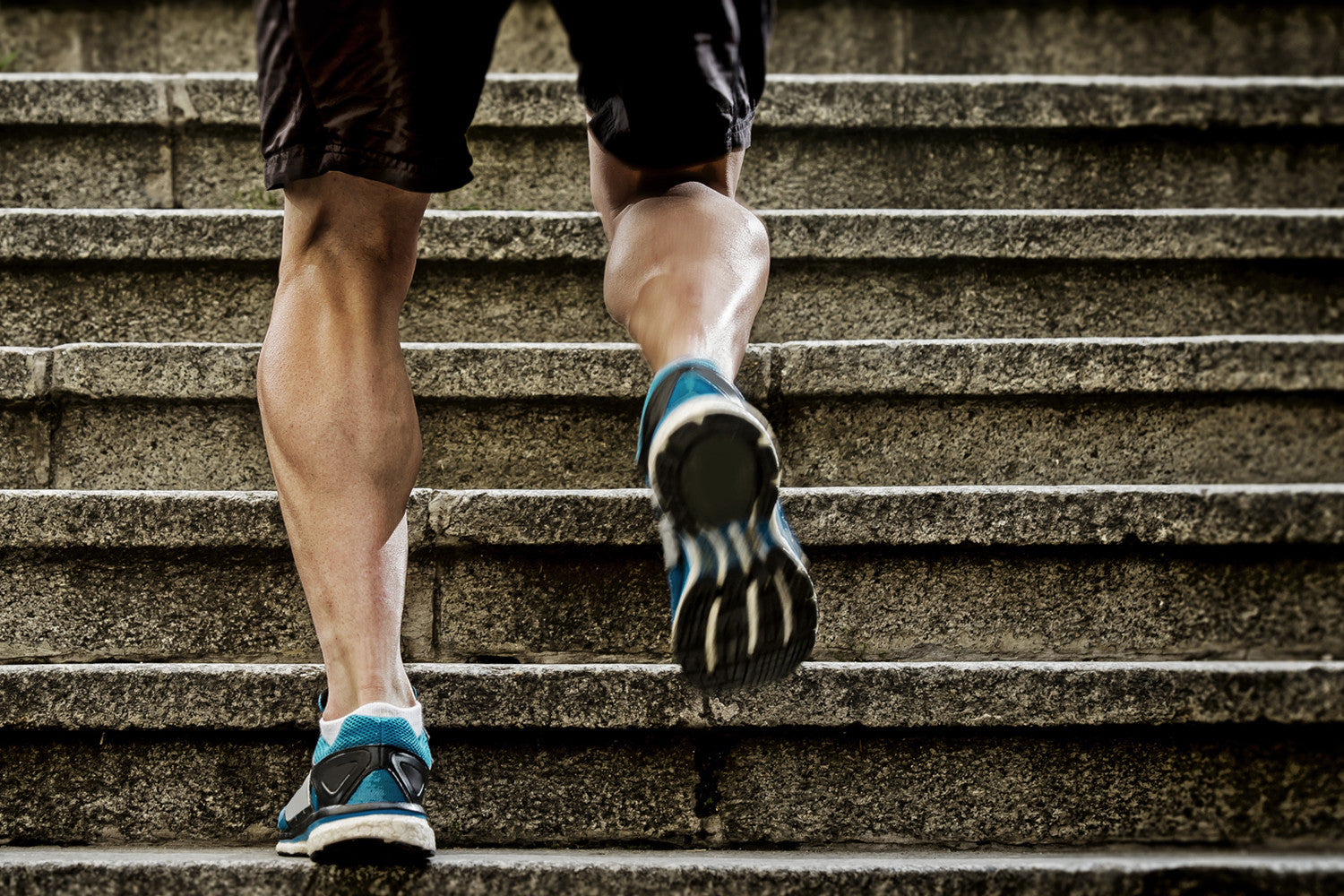
If you’re self-conscious about the size of your calves, despite hundreds of reps of calf raises, this article is for you. Those little calf muscles can be stubborn and resistant to growth, especially if you’re genetically prone to smaller legs. Luckily, there are some tricks you can use to experience changes and hypertrophy (that's a fancy term for muscle growth) in your calves.
What You Need to Know About Your Calves
- Calves (made up of the gastrocnemius and soleus) are muscles just like your other body parts. They aren’t the biggest of muscles in your body, but they are a voluntary muscle, so things like frequency of working them out, tempo, weight, rep count and rest time will make a difference in how well they develop (more on this below).

- Though it is a small muscle group, it is one that is constantly being used. Your calves are engaged when you're running, walking, standing and even driving. Because of this, your calves will require a different approach when working them out for growth relative to some upper body muscles.

- The range of motion of the muscle is critical for its growth. To have a healthy range of motion, stretching and foam rolling needs to be a part of your post-workout routine.

Calf Exercises
The main movements that occur at your feet which use the calf muscles are 1) pulling your toe in toward your shin, 2) rising up on your toes, 3) turning your feet outward and inward.
Like the biceps, calves only have so many directions they can move, so the exercises for the calves are all very similar, but can be done in a variety of ways to help spur growth. Calf exercises will be performed by standing up and pressing through your toes. Some of the best exercises you can do for your calves are
- Seated calf raises

- Standing calf raises

- Calf press on leg press machine

- Standing single leg body raises with dumbbell or kettlebell

These exercises are typically performed with toes facing forward. To emphasize different areas of calf muscles, you can try doing these with your feet pointed inward and outward. Switch directions every few workouts or with each new exercise.
How to Grow Your Calves
Now that you have the basic knowledge about your calf muscles, below are some additional things you can do to support their growth. As mentioned above, adjusting workout frequency, temp, weight, rep count and rest will make a big difference. Here are ways you can implement these factors to keep your calf muscles growing:
- Work them out regularly. Implement working out your calves into your regular workout regimen. I don't recommend working them out every day, but you can safely work your calves out 2-3 times per week.
- Start with low rep, heavy weight exercises. The gastrocnemius muscle is a fast twitch muscle which requires lower rep exercises to train effectively. Fast twitch muscles are used for explosive movements like sprinting, vertical jumps, and power cleans, and respond to heavier weights and lower reps (2-8).
- Then move to the high rep exercises. The soleus muscle is about 88% slow twitch muscle fibers, so you're going to want to increase your rep range to grow this "endurance" muscle. Slow twitch muscles take longer to fatigue and respond best to higher reps. Pick two more calf exercises. You're going to do around 3-4 sets each and about 20-30 reps per set. If you’re on a standing calf raise machine, start with a weight that is approximately 120% of your body weight. Again, use common sense, and increase the weight with each set if you can (also 10 -20 lbs). If not, keep it at the starting weight until the exercise feels more comfortable.
- Change the exercises/order every two weeks. Presenting a new or different movement frequently will help provide better results and decrease the potential of your calves adapting to the workout. If you have six exercises you can do for your calves, pick five for the first two weeks and switch them out for the next two weeks. To help simplify things, you can also increase the weight and change your tempo, which is the time it takes to perform the exercise (explained in the next bullet).
- Do not bounce. You know what I'm talking about. Bouncing up and down will stress the tendon more than the muscle in your calves. For the tempo of the lower rep exercises, one rep should take about three seconds. For the higher rep exercises, one rep should take about two seconds. So, if you’re performing a calf raise, this would mean it takes you three seconds to stand up on your toes, and three seconds to lower back down to your starting position.
- Note what your body is telling you. If you follow what is written here and see great results, then keep doing what is working. But if you follow these steps and don't see what you're looking for you can try 1) Switch the exercise around 2) Slow down the tempo 3) Use heavier weights or 4) All of the above. You'll find a combination that is going to work best so make sure you keep attentive to the changes your body presents to you.
Before you start implementing these tips, keep in mind that everybody is different, so make sure to train safely and listen to what your body is telling you. If you're too sore to work your calves out, skip a day or two and let them heal before working them out again. Quality rest is just as important as quality workouts.
Sources
https://www.acefitness.org/blog/5714/slow-twitch-vs-fast-twitch-muscle-fibers








